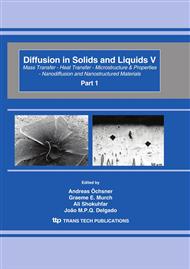p.641
p.650
p.656
p.664
p.670
p.676
p.682
p.688
p.695
Finite Volume Methods with Multi-Point Flux Approximation with Unstructured Grids for Diffusion Problems
Abstract:
This paper addresses the key issue of calculating fluxes at the control-volume interfaces when finite-volumes are employed for the solution of partial differential equations. This calculation becomes even more significant when unstructured grids are used, since the flux approximation involving only two grid points is no longer correct. Two finite volume methods with the ability in dealing with unstructured grids, the EbFVM-Element-based Finite Volume Method and the MPFA-Multi-Point Flux Approximation are presented, pointing out the way the fluxes are numerically evaluated. The methods are applied to a porous media flow with full permeability tensors and non-orthogonal grids and the results are compared with analytical solutions. The results can be extended to any diffusion operator, like heat and mass diffusion, in anisotropic media.
Info:
Periodical:
Pages:
670-675
Citation:
Online since:
April 2010
Authors:
Price:
Сopyright:
© 2010 Trans Tech Publications Ltd. All Rights Reserved
Share:
Citation:


